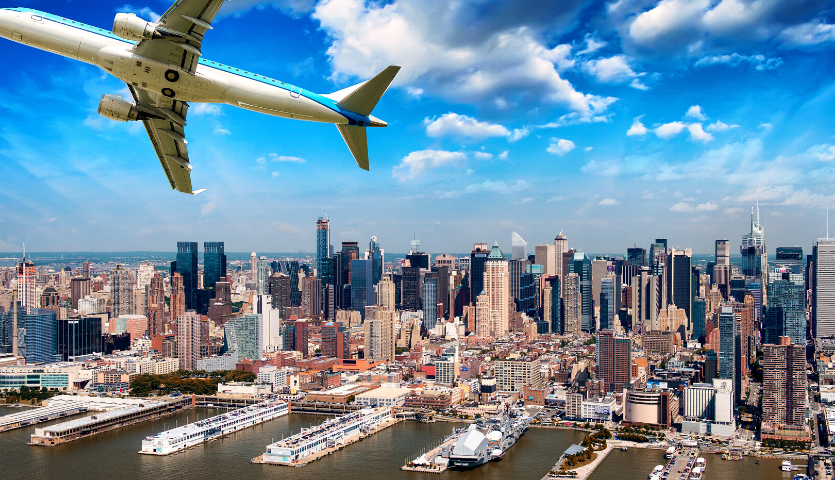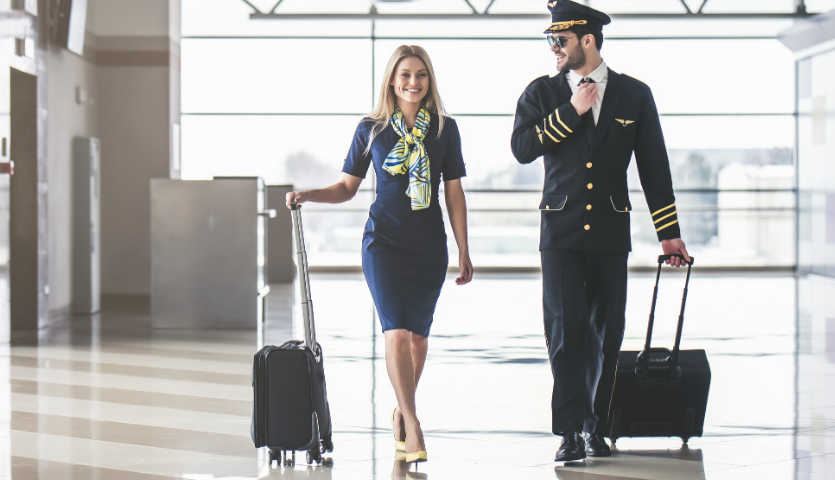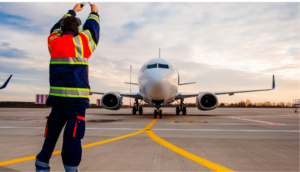On March 27, 2020, the Coronavirus Aid, Relief, and Economic Security Act (CARES) was signed into law by the president. The $2 trillion package is aimed at providing relief for an economy that has been hard hit due to the COVID-19 pandemic. Here’s what it means for airlines and for air travelers.
Economic Stimulus Implications for Airlines and Travelers
The most relevant section of the CARES Act – H.R. 748 for air travel is Title IV or the “Coronavirus Economic Stabilization Act of 2020”. This portion of the bill relates to assistance given to severely distressed sectors of the U.S. Economy — including the airline industry. While there isn’t much in terms of direct effects for consumers, the bill does have some implications for airlines and regulations that must be adhered to in order to accept any grants or loans, which may indirectly affect consumers of air travel.
Related: COVID-19 Flight Cancellations by Region and Airline
Excise Tax Holiday Through the End of 2020
The tax holiday is what will have the most impact on airfares. For the rest of 2020, there will be a tax holiday for fuel used in commercial aviation and for certain excise taxes on airline tickets. This means you’ll no longer see the 7.5% Federal Excise Tax nor the Flight Segment Tax ($4.30 per segment) on the breakdown of taxes and fees. For flights to Hawaii, Alaska, Puerto Rico, and the U.S. Virgin Islands, the tax savings are even greater. The Travel Facilities Tax for travel between the Continental U.S. and either Hawaii or Alaska ($9.50 each way) and the U.S. Transportation Tax for travel to/from Puerto Rico or the U.S. Virgin Islands ($18.90 each way) are also suspended for the rest of the year.
The break on fuel taxes for airlines could translate into lower fares overall, but most travelers probably won’t even notice that they are no longer paying the excise taxes. Airlines have already raised some base fares so the typical tax-inclusive price has remained the same, but airlines will now be allowed to keep more of that total price. Since airfares have fallen drastically due to a severe drop in demand, most consumers won’t notice anything different. However, if demand does pick up again before the end of 2020 and airlines are competing heavily for passengers, there will be more wiggle room to lower prices even further than has been possible in the past. And since the “base fare” of airline tickets will now be a higher percentage of the total price, promo code sales, which only discount the base fare, will generally provide larger overall savings.
Another instance where we might see this tax holiday come into play is when ultra-low-cost carriers like Spirit and Frontier have “Penny Fare” sales. The “base fare” for these sales is just $0.01, which means the only opportunity to make any money comes from online booking fees and ancillary revenue such as bag and seat fees. Since the Department of Transportation requires airlines to advertise prices with all taxes and mandatory fees included, the rock-bottom prices in these sales have typically been $29-$50 roundtrip, depending on the online booking fee and airport facility charges.
Now that there are no longer any excise taxes charged in 2020, the only mandatory fees for domestic flights are the U.S. Passenger Security Fee ($5.60 each way) and Airport Facility Charges (usually $4.50 per segment). We may start to see rock-bottom fares as low as $11 one-way or $21 roundtrip. And if an airport doesn’t charge a facility fee, such as Greenville/Spartanburg (GSP), you may just be paying the U.S. Passenger Security Fee ($5.60 one-way). Since the major carriers often lower fares to compete with these rock-bottom prices on budget airlines, we’ll likely see lower fares all around thanks to the tax holiday.
A few frequent flyer programs, such as Southwest, have point redemptions that basically correlate to the base fare of ticket prices. In this case, for example, a $49 ticket will now cost slightly more points than it used to, because the $49 ticket has a higher base fare than it did before the tax holiday.
Related: How to Fly Southwest Airlines (And Get the Seat You Want)

Smaller Cities Will Maintain Minimum Service
Section 4005 of the CARES act requires “to the extent reasonable and practicable, an air carrier receiving loans and loan guarantees under section 4003 to maintain scheduled air transportation service as the Secretary of Transportation deems necessary to ensure services to any point served by that carrier before March 1, 2020.”
This means if an airline chooses to take some of the $50 billion available in the CARES act, it must maintain a minimum level of service in all of its U.S. markets. On April 7, 2020, the DOT issued the final order pertaining to this requirement, which was amended slightly from the initial proposal. Basically, it states that airlines accepting assistance must keep flying to each city it served during the week ending February 29, 2020, at least once per week. To accommodate airlines with seasonal schedules, the DOT is allowing airlines to choose to operate in all markets served during the week ending August 4, 2019, as an alternative.
Larger carriers, which held at least a 10% share of the total domestic capacity in 2019, are held to higher frequency requirements than the smaller airlines. American, Delta, Southwest, and United are all considered large airlines in this case; all other airlines are considered small carriers. Below are the new frequency requirements depending on the previous number of flights.
Large Carriers (American, Delta, Southwest, and United)
- Previous: 1-4x/week; New requirement: 1x/week
- Previous: 5-24x/week; New requirement: 3x/week
- Previous: 25x +/week; New requirement: 5x/week
Small Carriers (All others)
- Previous: 1-4x/week; New requirement: 1x/week
- Previous: 5x +/week; New requirement: 3x/week
For example, Duluth, MN (DLH) was served by all three legacy carriers during the week ending February 29, 2020. Both American and United had 14 frequencies and Delta had 33 frequencies. The new required minimum service means that American and United must both keep flying to Duluth 3x per week and Delta must maintain 5 weekly flights. In Cleveland (CLE), there were a total of 327 frequencies on United in the last week of February. The new requirement will be just 5 weekly flights. Those flights can all be to the same airport, say Chicago (ORD), or dispersed through multiple airports that it previously served (i.e. Newark (EWR), Washington DC-Dulles (IAD), Chicago (ORD), etc.)
Some airlines only fly to certain cities in the winter and do not provide summer service to those destinations and vice versa. For instance, many legacy carriers have seasonal winter-only service to ski destinations in Colorado such as Vail (EGE) and Steamboat Springs (HDN), and ultra-low-cost carriers like Allegiant and Frontier tend to have more seasonal routes than year-round routes. The alternative option means, for example, that Frontier could choose to keep flying to its 13 summer-only cities such as Savannah (SAV) and Branson, MO (BKG), among others, or keep flying to its 2 winter-only destinations Palm Spring (PSP) and Tucson (TUS), albeit each would only need to be served once per week.
Airlines will have the opportunity to file for exemptions in certain markets where the cost of operating flights exceeds demand and the DOT will consider these exemptions on a case by case basis. These minimum service requirements are initially in place through September 30, 2020, and can be extended at a later date if the DOT deems it necessary to keep the U.S. transportation network intact.
Related: COVID-19 Flight Waivers and Refund Policies by Airline

Metro Areas Can Consolidate Service to One Airport
In major metro areas, there are sometimes up to 6 airports providing service to the same market. The minimum service requirements for airlines pertain to cities rather than specific airports, which means each airline can consolidate all of its operations in major metro areas to just one airport. For example, Delta could stop flying to Newark (EWR) all together and only fly from New York (JFK) or both JFK and LaGuardia (LGA). Furthermore, it would only need to maintain 5 weekly flights out of the NYC area.
The DOT is using data from the Bureau of Transportation Statistics (BTS) to determine which airports are considered part of the same metro area, which means airports in Long Island-Islip (ISP), Newburgh (SWF), and Westchester County (HPN) are also being lumped in as NYC area airports and could lose service from certain airlines all together.
JetBlue has already started consolidating flights in Boston, Los Angeles, New York City, San Francisco, and Washington D.C., and we expect more airlines to follow this model as demand for flying keeps getting closer to zero. Alaska Airlines has decided to consolidate its operations in a unique way by offering 1-stop flights in certain markets where it used to offer nonstop service. For example, flights between Charleston and Seattle stop in Raleigh, and flights between Seattle and Santa Barbara stop in San Luis Obispo.
In short, flight options from secondary airports are likely to be a mere fraction of what they used to be and certain airports may lose service entirely, but all metro areas and smaller cities throughout the country will continue to be served, which is the main point of Section 4005 of the CARES act — to keep our country connected.
Related: How to Get a Refund for Flights Canceled Due to COVID-19

Airlines Must Keep Front Line Employees
The best news for airline employees is that any airline accepting part of the $25 billion set aside for grants must keep paying all non-executive employees that were on the payroll as of March 24, 2020, to the extent practicable. At a minimum, it has to maintain 90% of its workforce. This means that front-line employees, which include pilots, flight attendants, gate agents, baggage handlers, and reservations agents, must maintain their minimum salary, wages, and benefits through September 30, 2020.
However, this doesn’t mean they will continue to earn what they had previously earned. Minimum wages and salaries for these employees does not always amount to a full-time schedule and many employees will still be making considerably less than before. For example, many pilots and flight attendants only get paid for “block hours”, which is the time between when the plane leaves the gate at the departure point (block out) to when the plane arrives at the gate in the arrival city (block in). Since flights are being cut drastically, it’s safe to say that very little, if any, will be earning more than the minimum guaranteed hours per month.
Airport employees are also going to be working less than normal — some part-time employees are only guaranteed 300 hours per year. Even with the requirement to keep paying airline employees, airlines will likely face situations where its employees will still be applying for further assistance or pursuing another job opportunity. Some airlines have been offering employees special COVID-19 leaves of absence to help reduce the amount it has to keep paying a workforce that will be larger than necessary for most of 2020.
The good news is that this will keep airlines staffed for the inevitable return of the traveling public. Instead of starting from scratch, this provision ensures that airlines will have a trained and ready workforce when demand for flying starts to pick up again.
Stay on top of breaking sales, fare drops, and more! Follow us on Twitter @Airfarewatchdog. And make sure to sign up for FREE airfare alerts to be notified when prices drop.






